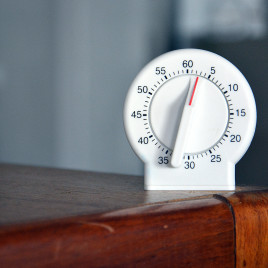Note: This information is intended as general advice only and may not account for your unique circumstances such as usage habits, home and power provider.
If you’re fortunate to be in a house with a heat pump - or indeed be in the market to get one installed- good news, the modern heat pump is very efficient in terms of its output to operation cost. But working with a heat pump isn’t guaranteed to save you - especially if you don’t plan your heating with a few key considerations. In this guide we’ll take you through the key benefits of a heat pump, as well as some tips to help you get the best results.
In this guide you’ll learn things like:
- What a comfortable room temperature really is.
- The direction of heat output and how this impacts the results of your unit.
- Key times in the day to run the heat pump to save on costs.
Heat pumps don’t need to be set on max to work
As tempting as it might be to grab your heat pump remote and crank that temperature right up, it’s both unnecessary and a waste of your electricity. On a regular winter day, you should feel comfortable with a mid-level fan speed at 18-20 degrees celsius. If the day’s particularly cold, a burst of higher temperature won’t hurt. But we’d always suggest aiming for a regular setting around that 18-degree mark as this is generally considered comfortable room temperature.
When you set the heat pump to 18 degrees, you may feel the air coming out being cooler than you’d typically expect from a heater. Stand away from the heat pump and let it fill the entire area with heat. In 20-30 minutes, you should have a comfortable temperature. If you’re concerned about a cool draft from the unit, turn down the setting so the power at which air comes out is reduced.
There’s rarely a need to run a heat pump at 24 degrees plus - and if you do, you’ll notice this in the next power bill.
Use the timer function of your heat pump
Like any heating, timing the operation of your heat pump is an excellent way to get the best performance for the least power. All modern heat pumps have a timer function, so you can synchronise heating with the colder times of day. 
Learn the settings of your heat pump
Okay, we’ll admit; reading the manual is boring. But as much as heat pumps allow for reasonably easy operation, many have quick settings or ‘modes’ that can adjust the parameters of air flow, temperature and duration to suit different situations. Some examples are:
Eco mode
Your heat pump will run at a lower fan speed and temperature to provide heat at lower energy consumption than regular setting.
Sleep mode
The unit will rescue the fan speed to stay quiet while everyone sleeps but still provide heating.
Fan mode
Want to get some air movement around the room without any cooling or heating? Select this setting if available.
Heat mode
Quick setting that warms the room quickly - make sure the temperature isn’t too high on this setting and thus wasting power.
Cool mode
Cool down the home quickly without having to select temperature or fan speed.
Dry mode
Your heat pump might have a mode that seeks to dry the room and emulate a dehumidifier.
Haven’t got one installed yet? Think carefully about placement.
 Getting a heat pump installed requires some planning to get the most out of it. This means determining where it should be placed to drive maximum coverage of the area. Consider the following:
Getting a heat pump installed requires some planning to get the most out of it. This means determining where it should be placed to drive maximum coverage of the area. Consider the following:
- Where will the heat pump be best situated to generate heat to as much of the room as quickly as possible
- Where can the outside unit of the system be practically positioned?
- Does the heat pump need to be large enough to push warm air down a long hallway and into rooms?
- How will the piping be placed between the inside unit and outside unit?
The good news? You don’t need to figure this out alone. If you purchase a heat pump from a specialist provider, they’ll likely include installation as part of the service. They’ll need to come and do an initial assessment and can help answer all these questions and offer suggestions on placement.
Common mistakes made by heat pump owners
Getting a heat pump is a worthy investment in keeping warm during winter. But there are some common misconceptions or missteps:
- Buying a heat pump that’s too small for the room it’s meant to heat.
- Choosing a heat pump too large for the space, thus wasting power.
- Running the heat pump on a temperature that’s far too high.
- Not taking the time to learn the modes available.
- Not using a timer to set the heat pump on at key moments throughout the day and night.
- Running the heat pump constantly.
- Not shopping around for the best price of unit and installation.
- Not reading reviews.
- Rushing into installation before a proper assessment of the space has been completed.
- Using modes at the wrong times.
- Not keeping the room ventilated and light.
A heat pump is an excellent appliance if used properly. Take the above into consideration and you should see some good results for you and your heating costs.